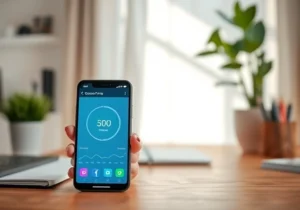How to Reduce Smartphone Addiction: Effective Tips for a Balanced Life
With smartphones becoming central to our daily lives, many people struggle with excessive screen time that impacts productivity, sleep, relationships, and mental well-being. If you want to regain control over your smartphone usage, here are research-backed strategies to help you reduce smartphone addiction and enjoy a healthier digital lifestyle.
1. Understand Smartphone Addiction
Smartphone addiction, or “nomophobia” (fear of being without a mobile phone), involves compulsive usage patterns that disrupt daily life. Typical signs include frequent checking for notifications, feeling anxious without your phone, and spending hours on social media. Recognizing the issue is the first step toward making positive changes.
2. Identify Your Triggers
Analyze what compels you to use your phone excessively. Is it boredom, stress, or a habitual response? Understanding these triggers can help you replace mindless phone use with healthier habits:
- Boredom: Engage in a hobby like reading or drawing.
- Stress: Try meditation, journaling, or going for a walk.
Addressing these underlying causes can make it easier to manage screen time.
3. Set Screen Time Goals
Smartphones now include screen time tracking tools like Screen Time on iOS or Digital Wellbeing on Android. Use these tools to:
- Set daily time limits for specific apps.
- Schedule “downtime” to minimize distractions during certain hours.
- Monitor weekly screen time reports to identify patterns.
Tracking and setting limits on usage will help you develop healthier digital habits over time.

4. Create Phone-Free Zones
Establish “phone-free” areas or times to reduce unnecessary usage:
- Bedroom: Keeping your phone out of the bedroom can improve sleep quality.
- Dining Area: Enjoy meals without digital distractions for better connections.
- Work or Study Space: Avoid distractions by keeping your phone out of reach while working.
These designated zones help reinforce boundaries and encourage more face-to-face interactions.
5. Implement a Digital Detox
Taking a break from screens can improve focus and mental clarity. Try starting small by taking a few hours or a day off from your smartphone each week. Benefits of a digital detox include:
- Enhanced productivity and focus.
- Quality time for offline activities.
- Reduced eye strain and better posture.
Consider doing a digital detox with friends or family for added motivation.

6. Turn Off Non-Essential Notifications
Constant notifications keep you tethered to your phone. Disable notifications for non-essential apps like social media, games, and emails. By reducing interruptions, you’ll find it easier to focus on what truly matters.
7. Switch to “GrayScale” Mode
Colorful screens make apps more engaging and addictive. Switching your screen to GrayScale can reduce your phone’s visual appeal, making it less tempting to use. Here’s how:
- iOS: Go to Settings > Accessibility > Display & Text Size > Color Filters > GrayScale.
- Android: Go to Settings > Digital Wellbeing > Wind Down > Grayscale.
GrayScale mode helps make your phone less appealing and reduces the urge for mindless scrolling.
8. Cultivate Offline Hobbies
Filling your free time with offline hobbies can naturally reduce your smartphone dependency. Consider these ideas:
- Reading: Set aside time for a good book instead of scrolling.
- Exercise: Physical activities like yoga, jogging, or team sports are great distractions.
- Learn Something New: Taking up a hobby like cooking, painting, or playing an instrument can keep you engaged and reduce screen time.
Meaningful offline activities bring fulfillment and offer an alternative to smartph
one use.

9. Limit Social Media Usage
Social media is one of the biggest culprits in smartphone addiction. Try these strategies to limit usage:
- App Limits: Set daily time restrictions for each social media app.
- Log Out: Signing in each time makes checking these apps less convenient.
- Unfollow: Reduce content overload by unfollowing accounts that don’t add value.
By reducing social media engagement, you’ll have more time for productive, offline activities.
10. Seek Accountability and Support
Reducing smartphone addiction is easier when you have support. Share your goals with family or friends, and ask for their help in sticking to your screen time limits. Set challenges, such as putting your phones away during social gatherings or at meals.
11. Celebrate Progress
Breaking smartphone addiction is a process, so celebrate small wins. For example, reward yourself if you reach a screen time goal, like staying off your phone for a whole evening. Rewards can help reinforce positive behaviors and keep you motivated.
Conclusion: Find Balance in a Digital World
Smartphone addiction doesn’t have to dominate your life. By identifying triggers, setting goals, creating phone-free zones, and engaging in fulfilling offline activities, you can reduce screen time and cultivate a healthier relationship with your device. Small, consistent changes make it easier to build sustainable habits that bring balance to your digital lifestyle.







